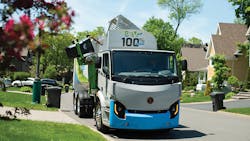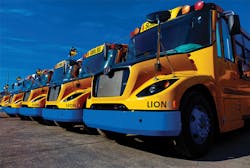Traditionally, the customer’s side of the meter hasn’t gotten a lot of attention. It’s been referred to as the edge of the grid, which conjures up a picture similar to a flat Earth with nothing beyond that edge. However, the 21st-century grid has a great deal of technology associated with the customer’s side of the meter — especially when it comes to power generation with renewables.
Modern industrial, commercial, and residential customers have embraced rooftop solar, residential wind power, fuel cells, microturbines, community solar, and many other distributed energy resources (DER). DER technologies are allowing our customers to both consume and generate electricity, which has brought about a new element in the grid: the prosumer.
Prosumers and their distributed generation have caused bidirectional power flows coming from the grid’s edge. It’s opening the grid to a more decentralized way of supplying power, and it’s providing some unexpected benefits when it comes to dealing with extreme weather events and wildfires.
What to Do
These types of disasters can knock out hundreds of thousands of customers very quickly, while restoration can take a long time. As a result, there has been increased interest in DERs and energy storage. One example of this is Tesla’s Power Wall, which has made personal home lithium-ion (Li-ion) energy storage systems more available for residential customers.
Sunrun has been focused on solar plus storage, making the virtual power plant a reality with their Brightbox system. They are aggregating commercial and residential solar plus storage systems. These advanced DER systems are able to address extended power outages, and that is an enormous advantage given the increase in these incidents.
Because wildfires have been so catastrophic in California, the utilities are authorized to voluntarily turn off the power when conditions favor wildfires. It’s called a “Public Safety Power Shutoff,” but that can produce extremely long outages. Since customers are unwilling to sit in the dark, there has been an increase in customer awareness in these DER devices.
Off-Grid Power
With the massive penetration of rooftop PV solar, it seems logical that DER plus storage is being seen as a significant method for mitigating these long outages. Schneider Electric has made it easier for customers with its Conext solar products. This product line can be the customer’s primary source of AC power when needed. Rooftop solar systems provide the customer the ability to control their energy cost, and by adding storage it gives them an alternative to sitting in the dark and waiting until the power comes back on.
The fact that both solar plus storage have gotten more efficient and affordable doesn’t hurt either. It wasn’t long ago that experts said residential solar was too expensive to be taken seriously and don’t even think about adding storage. Today, solar plus energy storage are becoming powerful tools for DER technologies, with outage-killing apps and dropping prices promising increased acceptance.
According to the Solar Energy Industries Association (SEIA), over the last decade the installed price of PV solar systems has fallen by more than 70%. During the same period of time solar installations have experienced an average annual growth rate of about 50%. It isn’t just solar panels either. Recently, Bloomberg NEF reported that worldwide, the levelized cost of electricity for Li-ion batteries has declined 76% since 2012.
Granted, these percentages represent all PV solar installations and all Li-ion battery systems, but it follows the famous philosophy of “a rising tide lifts all boats.” If the prices are falling across the industry, they are falling in the behind-the-meter marketplace as well. Case in point, SEIA reported the U.S. installed 603 megawatts (MW) of residential solar in the first quarter of 2019. That is a lot of residential solar being added in one quarter, so the lower cost is helping.
Going Mobile
Maturing energy storage technology is also having an interesting effect on the industry. Serious development is taking place with an offshoot of DER schemes: batteries on wheels. Electric vehicles (EV) have been with our customers for years, but it has been more of a load than a resource. What if EVs were considered mobile energy storage devices? That idea has been getting the attention of engineers as they deal with mitigating the effects of extended outages from extreme weather, wildfires and voluntary outages.
Using EVs as mobile energy storage devices gives the utilities, communities, and customers the ability to bring power to the emergency. Keep in mind, these apparatuses are more than the portable generators from a big box home supply store. It’s the old plug-and-play concept with a modern twist.
A few months ago the “Charging Ahead” (August 2019 T&D World) segment looked at some aspects of electric vehicles and their influence on the environment, the grid, and the customer. It was pointed out that EV penetration has greatly increased in recent years and it is projected to grow more rapidly in the future.
As the numbers of EVs increase significantly, so does the potential for EV technology to be used in mobile DER schemes. After all, worldwide there are more than 5 million EVs on the road today. That is a lot of battery capacity, so why not take advantage of that as a mobile energy storage source?
Byron Flynn, technical solutions director for GE Renewable Energy’s Grid Solutions discussed some innovative concepts using Electric Vehicles (EV) and their charging technology. These devices are a significantly growing component of a hybrid grid. There are valuable use cases when large vehicle-to-grid (V2G) and vehicle-to-building (V2B) vehicles, such as buses and Class 6 to Class 8 trucks, become part of the available distributed resource ecosystem.
With the addition of software algorithms, communications, protection and control systems, and adequate electrical infrastructure, the vehicles can now become part of a larger system. EVs can increase the grid reliability, decrease demand charges (i.e. peak shaving), and provide grid ancillary services. By increasing EVs on the road, they can safely increase the number of wind and solar power generation assets supplying electricity, and potentially tie to local energy markets for additional revenue.
Schoolbus Power
One innovative approach takes into account the ability of a school bus to provide local power to a building or campus during a large outage caused by severe weather or wildfires. This application has even more appeal where the mobility of a large vehicle has an advantage over traditional battery energy storage systems.
Scott Hoyte, managing director for GE’s Renewable Hybrid Distributed Energy Solutions said, “GE Distributed Energy Solutions is working on some interesting applications to provide customers with sustainable solutions including capital and operational cost and expected payback terms. These solutions are better for the environment because they emit less carbon than traditional power generation, plus they are economical with payback several years after the initial investment.”
Noah Pennington, engineering director for GE’s Renewable Hybrid Distributed Energy Solutions said, “Providing communications, protection, control and DERMs software designed to help facilitate the connection to the local grid and utility is really important. At GE’s Research campus in Upstate New York, we have a dynamic, 6MW Future of Energy Test Facility. It’s equipped with energy storage, solar, inverter technology and a 50 kW DC fast charger available to test a wide variety of future grid scenarios, including V2G and V2B use cases.
Pennington also stated, “We’re in discussions with bus fleet operators, truck fleet operators, EV bus OEMs, and EV truck OEMs to explore potential demonstration projects and technology development on site. Batteries, EV vehicle and charging technology are advancing at a rapid pace and our experts at the Global Research Center are prepared to help these industries break through technological barriers.”
Utility V2G Pilots
The Department of Energy’s National Renewable Energy Laboratory (NREL) has been evaluating V2G electric school buses integration capabilities since 2015 in the Napa Valley unified school district and Torrance unified school district. Recently, the California Public Utilities Commission approved a San Diego Gas & Electric V2G electric school bus pilot project. SDG&E will purchase 10 electric school buses and install charging stations.
Last year the New York Public Service Commission approved a Con Ed project to use Lion C-type electric school buses in a V2G project in White Plains public school district. The buses will be used as stationary electric storage when parked. Also, Duke Energy received approval from the North Carolina Utilities Commission to start a V2G school bus pilot project. Duke would provide 85 electric school buses with associated charging infrastructure to school districts, which can be used with bidirectional connections to the grid.
V2G is only one of the latest energy storage innovations being explored to meet the demands of a changing grid. Sure there is going to be speedbumps, but there is so much potential those hurdles will be overcome. We can’t afford not to!
About the Author
Gene Wolf
Technical Editor
Gene Wolf has been designing and building substations and other high technology facilities for over 32 years. He received his BSEE from Wichita State University. He received his MSEE from New Mexico State University. He is a registered professional engineer in the states of California and New Mexico. He started his career as a substation engineer for Kansas Gas and Electric, retired as the Principal Engineer of Stations for Public Service Company of New Mexico recently, and founded Lone Wolf Engineering, LLC an engineering consulting company.
Gene is widely recognized as a technical leader in the electric power industry. Gene is a fellow of the IEEE. He is the former Chairman of the IEEE PES T&D Committee. He has held the position of the Chairman of the HVDC & FACTS Subcommittee and membership in many T&D working groups. Gene is also active in renewable energy. He sponsored the formation of the “Integration of Renewable Energy into the Transmission & Distribution Grids” subcommittee and the “Intelligent Grid Transmission and Distribution” subcommittee within the Transmission and Distribution committee.

